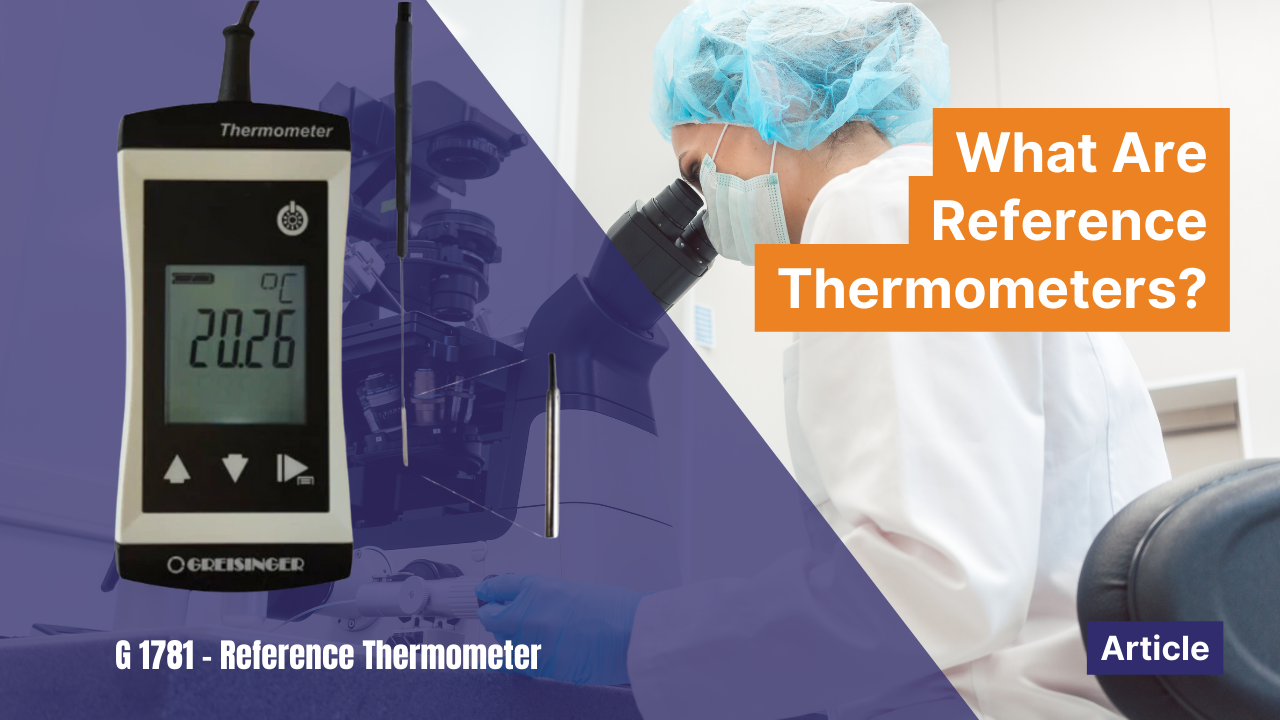
What Are Reference Thermometers?
Reference thermometers are essential in scientific and industrial applications where precise temperature measurements are critical. Unlike regular thermometers used in everyday contexts, reference thermometers provide high accuracy and reliability. They serve as standard measuring instruments against which other thermometers and temperature-sensing devices are calibrated. The role of reference thermometers is vital in ensuring the accuracy and consistency of temperature measurements across various fields.
In essence, reference thermometers are the gold standard for temperature measurement. They are meticulously designed and calibrated to deliver precise readings, making them indispensable in laboratories, industrial processes, and quality control settings. Understanding the importance and functionality of reference thermometers is crucial for anyone involved in fields where temperature plays a pivotal role.
The Importance of Accuracy in Temperature Measurement
Temperature measurement is a fundamental aspect of many scientific experiments and industrial processes. Accurate temperature readings are crucial for ensuring the integrity of experimental results and the safety and efficiency of industrial operations. Reference thermometers, which serve as benchmark instruments, play a critical role in maintaining this accuracy.
Inaccurate temperature measurements can lead to significant errors, compromising the quality and reliability of results. For example, in pharmaceutical manufacturing, precise temperature control is essential for ensuring the efficacy and safety of medications. Similarly, in food processing, accurate temperature monitoring is crucial for maintaining product quality and safety. Reference thermometers help mitigate these risks by providing reliable temperature measurements that can be used to calibrate other thermometers and sensors.
Types of Reference Thermometers
Reference thermometers come in various types, each designed for specific applications and temperature ranges. Common types include platinum resistance thermometers (PRTs), thermocouples, and liquid-in-glass thermometers. Each type has unique characteristics and advantages, making them suitable for different scenarios.
Platinum resistance thermometers (PRTs) are widely used due to their high accuracy and stability. They rely on the predictable change in electrical resistance of platinum with temperature, providing precise measurements. Thermocouples, on the other hand, are preferred for their wide temperature range and durability. They work based on the thermoelectric effect, where a voltage is generated at the junction of two different metals when exposed to temperature changes. Liquid-in-glass thermometers, though less common in modern applications, are still used in some laboratory settings for their simplicity and direct reading capability.
Calibration and Maintenance of Reference Thermometers
Calibration is critical to maintaining the accuracy and reliability of reference thermometers. It involves comparing the thermometer's readings with a known standard or reference and making necessary adjustments to ensure accuracy. Regular calibration is essential, as even high-quality reference thermometers can drift over time due to environmental factors and regular use. Maintenance of reference thermometers also includes proper handling and storage to prevent damage and contamination. For instance, PRTs should be handled carefully to avoid strain on the sensing element, while thermocouples require regular inspection for signs of wear or corrosion. Adhering to manufacturer guidelines and industry best practices for calibration and maintenance ensures that reference thermometers provide accurate and reliable measurements.
Applications of Reference Thermometers
Reference thermometers are used in various applications where precise temperature measurement is essential. In laboratories, they calibrate other thermometers and temperature sensors, ensuring the accuracy of experimental data. Industrial processes, such as chemical manufacturing and food processing, rely on reference thermometers to monitor and control temperatures to maintain product quality and safety.
In metrology, reference thermometers establish and maintain temperature standards. They are also crucial in environmental monitoring, where accurate temperature measurements are necessary to study climate change and other environmental phenomena. The versatility and reliability of reference thermometers make them indispensable tools in various scientific and industrial settings.
Choosing the Right Reference Thermometer
Selecting the appropriate reference thermometer depends on several factors, including the required accuracy, temperature range, and environmental conditions. The application's specific needs must be considered when choosing a thermometer that provides reliable and accurate measurements.
For applications requiring high precision, such as calibration laboratories, platinum resistance thermometers (PRTs) are often the preferred choice due to their superior accuracy and stability. Thermocouples are ideal for industrial applications with wide temperature ranges because of their durability and broad operating range. Understanding the unique requirements of each application helps in selecting the right reference thermometer, ensuring optimal performance and reliability.
Conclusion
Reference thermometers are vital instruments in ensuring accurate temperature measurements across various fields. Their role in calibration, quality control, and maintaining temperature standards underscores their importance in both scientific research and industrial applications. By understanding the different types of reference thermometers, their applications, and the importance of proper calibration and maintenance, professionals can make informed decisions to ensure accurate and reliable temperature measurements.


